#Wijngaarden
Explore tagged Tumblr posts
Video
ready to jump! by Bart Hardorff Via Flickr:
#2015#Alblasserwaard#Bart Hardorff#The Netherlands#Wijngaarden#mei#eend#kuiken#duckling#duck#tree#knotwilg#SpecAnimal#flickr
28 notes
·
View notes
Text







Jonathan van den Wijngaarden - After The Fall | Vertigo Games | 2022 | Clear
#jonathan van den wijngaarden#after the fall#vertigo games#vinyl#colored vinyl#lp#music#records#record collection#vgm#video game music#soundtrack
2 notes
·
View notes
Text

Mental
#mental#rob van wijngaarden#jaap willem baars#hans deen#arjan van der mee#jacob baars (paay)#loading
0 notes
Text
Phoenix Vocal indrukwekkende preview
Tekst en foto’s: Mieke van der Raay In het Zeeheldentheater in Den Haag was er zondagavond een korte preview van Phoenix Vocals in Concert. Phoenix Vocals staat onder leiding van muzikaal leider en arrangeur Richard FitzHugh en de regie van Marleen van der Loo en Justin Buijserd. Ze staan voor samenwerking, kwaliteit en performance op hoog niveau. Hun motto is: steengoed, creatief, gezellig én…

View On WordPress
0 notes
Text
* * * *
“Today we know that World War II began not in 1939 or 1941 but in the 1920's and 1930's when those who should have known better persuaded themselves that they were not their brother's keeper.”
— Hubert H. Humphrey

Jeroen van Wijngaarden _ Weeping Buddha
17 notes
·
View notes
Text
MAME & BL Literacies (Part 4)
Other parts: Part 1 | Part 2 | Part 3
Contents:
MAME’s queer characters and their lives
Fetishization of queer men and profiting off LGBT community
Why other queer genres like gei comi struggle to get live action adaptation?
(bonus) What Did You Eat Yesterday sexy times
BL and rape culture
Everyday ethnocentrism & BL
-
This is the last part of this essay series. In this part, I want to discuss the response this review of TharnType by @waitmyturtles generated. As always, corrections and criticisms are welcome.
-
Here are the points @solitaryandwandering raised:
1. fans will get SO rabid for MAME’s stuff yet resist tuning in for more queer-friendly Taiwanese BL or lower heat fare
I think that the BL MAME creates is "queer-friendly". Moreover, her BL focuses on the intersection of queerness with local forms of gender, patriarchy & heterosexism, class, race, skin color, age, employment, location & regionalism, abilities and disabilities, education, health conditions and access to medical care, urban-rural divide, migrant status, culture, etc.
MAME's BL have aspects of Thai queer culture and praxis that are otherwise overlooked. Here's an example.
Through Techno’s interaction with Tharn in episode 1 of TharnType, MAME highlights an important issue: invisibility of androphilic “man”. Techno comments that Tharn is the first masculine presenting androphilic male he has met, even though he has several queer friends.
This is in part due to skewed presence of androphilic male characters in mainstream media. In Thai soap operas and movies, androphilic men are 'presented as effeminate, overreactive, with a passionate but unrequited interest in men'.
Countering this perception is the hegemony of masculine aesthetics in urban Thailand’s queer culture. 'The English word “man” has been borrowed into Thai gay-speak to denote acting in a masculine way. Man describes a masculine presentation of either gay-identified or heterosexual males and contrasts with the Thai term phu-chai, which also translates as “man” but is used in the specific sense of denoting the gender role of a heterosexually identified male.
'Many Thai gays believe that effeminate gay men, or gay sao, will experience discrimination and prejudice because of their feminine characteristics and behaviours. Thai gays also think that performing gender-normative forms of manhood are useful in establishing sexual and romantic relations with other gays. These expectations are associated with the culture of images, known in Thai as phap-phot, by which many homosexual men feel compelled to act in accord with normative male gender roles.'
This is in contrast to Techno’s queer friends who blur the lines between the masculine and feminine domains. His use of the word kathoey is case in point.
Moreover, the need for social conformity for Thai gays in terms of their gender performance is an urban phenomenon. Ethnographic study by Wijngaarden traced the rapid adoption of more masculine gender performance by gay men who moved from rural setting to urban for the purpose of education and employment. Ambiguity in gender performance is more accepted in rural setting where there is gender-based understandings of homosexuality. Also, gay dating scene in urban areas seem to assign value to masculine presentation.
source
I don't really know what @solitaryandwandering mean by "queer-friendly" in the context of Taiwanese BL.
Support of fu-people (BL fans) for queer works in Taiwan is well-known. When the play 《愛情生活》 Life of Love by Xu ZhengPing was staged, they had BL version shows too.

The play has a short film adaptation which is available for free on GagaOOLala.
youtube
Fu-people have also shown their support for series like Breakfast by 想再見你.
-
@solitaryandwandering gave valuable response to this post which I am adding below.
I had to go back and re-read what I said in the post for more context. I think though we may disagree on a couple points (what people consider "queer-friendly" is somewhat subjective) your criticisms are totally valid. I think in my first point I was making a really broad generalization and my description of overall Taiwanese BL as being "more" queer-friendly largely rings false to me now. I think what I was frustrated with was more with what I've seen of BL fandom's response to the series and other works. The popularity of high heat and "problematic" themes (I'm using that pretty liberally) like abusive relationships or rape is pretty massive in comparison to Taiwanese stuff in general. But that's not to say Taiwanese stuff don't utilize the same tropes or themes. Hence why I think my comparison wasn't accurate.
In comparing Taiwanese BL I had seen at the time and MAME's stuff (specifically TharnType) I probably felt that Taiwanese BL didn't so heavily utilize themes which made me uncomfortable or angry at the way MAME was writing it. And I still do largely think that at least for her earlier stuff MAME needed to work on her characters and plots. I did not see Tharn or Type or the other characters or the story as appealing or positive representations of… anything. In my view at the time Taiwanese BL liked to play with similar themes but still (mostly) didn't leave me with a bad taste in my mouth. I don't really agree with what I think was a bit of a limited view at the time. Reading your post has given me a bit of a different perspective, too.
I don't think everyone making Taiwanese BL particularly cares about the response queer fans have haha. And MAME has shown she does, at least from my perspective.
And again lumping an entire country's slant on the genre against MAME's creations is a bit disingenuous. So I appreciate you criticizing that.
And I don't inherently think lower heat stuff is inherently more queer-friendly of course - queer people fuck! Queer people can do terrible things! But the gulf of popularity between high heat stuff versus lower heat at least in international online spaces is pretty large. That concerns me for the reasons I stated in my comments - why is fandom more eager to engage with one over the other? Do these fans see queer men as people or as things to fetishize? And how does MAME's writing encourage or discourage those damaging readings? Largely I think what I was referencing in my response was fandom response rather than what creators at large do.
I think we may disagree on how effectively MAME writes her shows but I do think my perspective on her as a creator has changed quite a lot. Her writing certainly has with each show. It's important to interrogate my own ethnocentrism as you point out in your post. Acting like I'm the arbiter of "good queerness" in stories just because I'm queer is not a practice I want to encourage.
and yes, I do think there is quite a bit of critical consumption of BL, and it has only been growing! I was concerned about those who do not critically consume, a more direct criticism.
But I did communicate it as a large generalization… One of the reasons why my response to stuff like TharnType is this way is because I have a background in domestic violence prevention, so the lens I look at that kind of material through is highly critical. But it is also a white American lens.
-
And here is my contribution to that discussion. I am very grateful for to @solitaryandwandering for engaging with this post.
What each think as “queer-friendly” is subjective. I wanted to be clear about what I thought as queer (since LGBT+ form is a little too narrow from my perspective). I wanted to place BL in the context of Taiwanese tongzhi (queer) culture and wanted to showcase the similarities and their connection. Life of Love by Xu ZhengPing, the tongzhi work I mentioned, has both "high heat" and "problematic" themes (it deals with infidelity) while addressing what it means to be tongzhi in post-marriage equality era. The BL versions’ ad is very funny. Please check out that link if you haven’t.
About abusive themes in BL, I really wish BL audience will pay attention to media consumed by queer people that are made by queer people in BL producing countries and realize how meek MAME is in comparison, both in terms of influence as well as themes. That is why brought up erotic treatment of rape aka rape for titillation – rare in BL but very common & celebrated in queer content from the region such as gei comi and gay pinku cinema. I think that answers the issues you raised – popularity of high heat stuff, queer men as fetish and damage it causes. I have been consuming gei comi and BL for years and when the live action boom happened, I was hopeful that gei comi will also start getting live action adaptation. Instead, there was a deluge of sweet BL and concerns about damage anything problematic can cause, not to mention the kind of critique authors as mild as MAME was getting. When female BL creators were getting bashed (not only about live action but also about comics and novels), I thought the criticisms would extend to gei comi. I was confused when it didn’t. I was even more confused when it seemed like no one was ever mentioning gei comi. It was as though those who were criticizing BL creators don’t know about gei comi.
To be honest, I don’t really know what damage everyone is talking about even now. I mean, what’s the basis of those claims? Gei comi always had those themes, a great deal more than BL. What harm did it ever perpetuate? Whom did it harm? I couldn’t find any evidence (empirical or anecdotal) no matter how I searched. (I will be grateful if you can direct me towards some research or something on the matter.)
Only damage that I know of is linked to the tangible impact of gei comi on the popularity of hairy, gachimuchi aesthetics of queer men [and associated physical manifestations of protest hypermasculinity] in East Asia that I discussed in part 2 of this essay series [as well as in my post on masculinities with special focus on Chinese androphilic men]. This is one area I think a lot of skinny queer men in East Asia would have found themselves at a loss. So I think BL exclusively having skinny dudes is a good thing.
I know that I can wish all I want but audience won’t accept live adaption of something like Fisherman’s Lodge much less Pride (my introduction to the genre and the reason why I fell in love with it). My Brother’s Husband sort of solidified my belief. Then Sei no Gekiyaku [Dangerous Drug of Sex] live action happened, and my worlds collided. All of a sudden androphilic men were discussing a BL like never before. It was such a hit on Netflix Japan. That’s when I discovered The Shortest Distance Is Round and then its sequels. By then it was clear that there is escaping the difference in wavelength.
I would like to make a small addition in light of Heavens x Candy (a 2024 Japanese BL movie, pinku adjacent that is available for streaming on Gagaoolala).
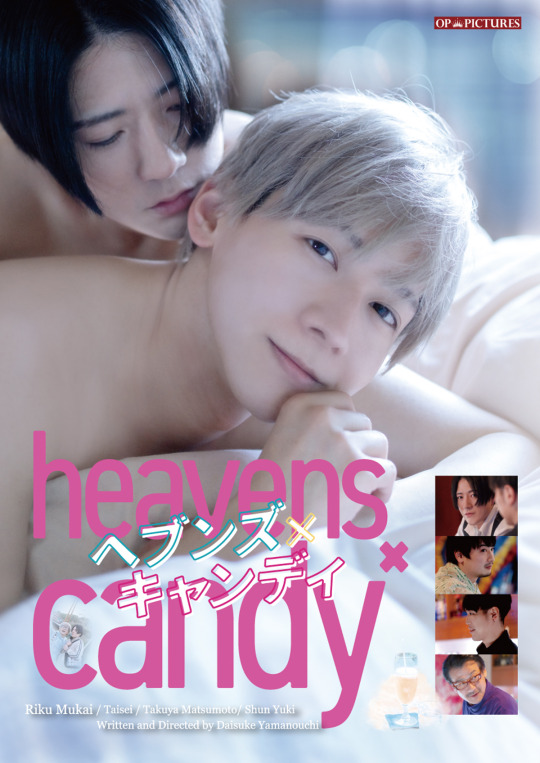
I now have greater hope for "hard" BL and even gei comi getting live action adaptation from OP Pictures (albeit without hairy, gachimuchi aesthetics. I mean the only actor doing such roles in BL is Kaji Masaki who acted in both KabeKoji and Smells like Green Spirit.) I plan to do a longer post on Heavens x Candy when I get time to rewatch it.
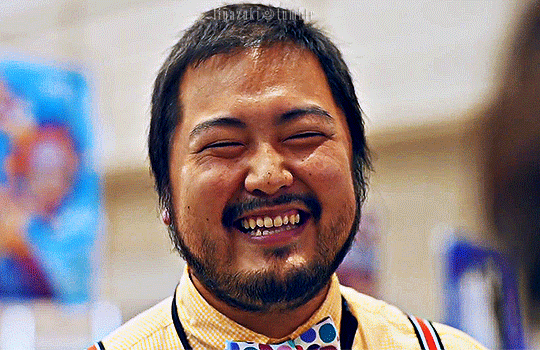



2. Fetishization of queer men in yaoi
By that standard, is Minamoto Kazuki fetishizing straight women through his works?

source
Minamoto Kazuki is a gay mangaka who creates straight romance and smut.

Arguably, his most famous manga, at least in BL fandom, is Wall Circle’s Doujin Artist Nekoyashiki-Kun’s Desire for Recognition Grows which got live action adaptation: KabeKoji in 2022.
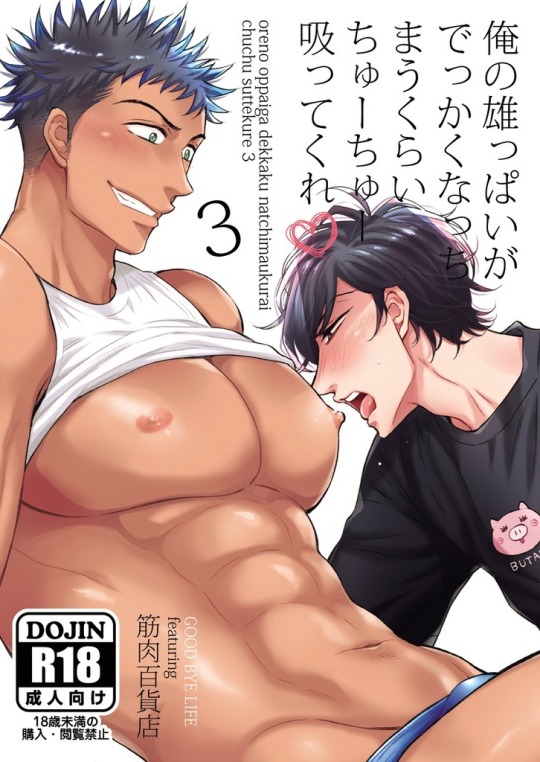
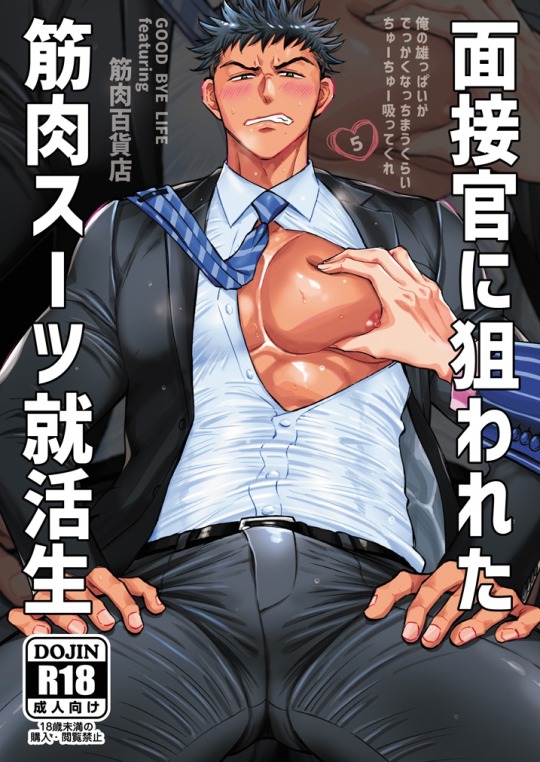
Apart from creating commercial BL and yaoi (self-published BL like the ones in the image given above), he has also authored an autobiographical work titled Shoujo Manga Artist Minamoto-San Comes Out and a manga exploring queer life and homophobia titled The Gay Who Turned Kaiju.
Moreover, many scholars, mangaka, fans, etc. from Asia and elsewhere have already spoken/written plenty about the issue of fetishization. Here's a compilation of resources.
3. zero critical consumption and leveraging of abusive concepts
I wonder why it is assumed that BL is consumed without critical thinking. It is true that BL, especially MAME's BL, are not didactic. TharnType is a BL with odo (royal road) narrative progression. It is not one of the sweet BL that GMMTV produces. Due to a general lack of BL literacies, there are off-the-mark expectations associated with BL, particularly Thai BL. Hence, odo BL seems to violate a lot of these misguided expectations.
TharnType is a well-done odo BL, in my opinion. "Leveraging of abusive concepts" is not a failure but a feature.
When it comes to depiction of abuse, there are those who think that it always gives the wrong message. There are variety in opinions on what is the right way to go about it. BL being an accommodating genre has space for all sorts of treatment. Even in live action, there is good variety in terms of how the theme is treated. But nothing is everyone’s cup of tea. This being the case it is understandable if someone like how MAME handles abuse, just as it is understandable if someone doesn't.
Assuming that fans don't engage critically with the theme and are mindlessly consuming it, have the implication of infantilizing the audience - as though they are without faculties of discretion and are incapable of making judgements. It also has the added implication of demonizing all media concerning queer people that deals with abuse. If MAME’s approach is deemed “unsafe” for queer population, based on that judgement, where does BL and gei comi that offer erotic treatment of abuse fall? What about queer people producing and consuming them?
That brings me to the points @nieves-de-sugui has raised.
4. how much all of these tropes where used (and still are). I believe that when things are made for tv they should take all the things you mentioned into account more than they do.
I believe that makers of live action queer content are very cautious. Thanks to that we are yet to get live action adaptation of any gei comi.
I have seen mainstream media ignore Gengoroh Tagame (probably the most popular gay mangaka creating content aimed at androphilic men) and his works for years in spite of his tangible influence on East Asian queer men. And then suddenly creating a live action adaptation of his all-ages manga My Brother’s Husband.

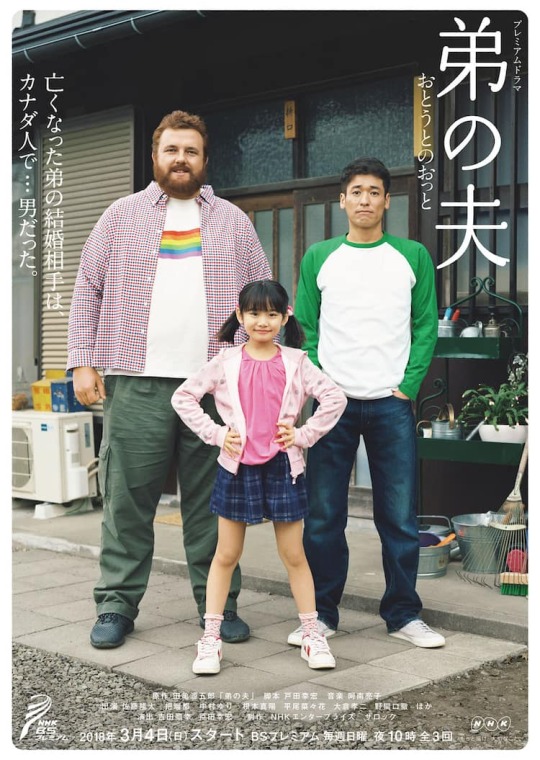
Who will dare to adapt his works Gunji or Fisherman’s Lodge or Pride? How can we show rape, trauma and taboo involving queer people on screen? What message will it give to the queer population? To the non-queer population?

A scene from Fisherman’s Lodge. Image courtesy of @finalatomicbuster.
If MAME was not involved in producing her BL, it is doubtful if it would have ever happened the way it did. Almost all BL adaptation is a censored adaptation, with notable exceptions like Sei no Gekiyaku. Recently, 25 Ji, Akasaka de (2024) removed complicated sexual content (including a dub-con episode) from the volume 1 of the manga, which was critical to the story and the couple’s development, in adaptation. Sukiyanen Kedo Do Yaro ka (2024) went as far as removing the more sexual second couple from the live action adaptation probably because makers thought it was better not to go anywhere near cruelty.
The first ever anime adaptation of a gei comi, Shin Yaranai ka based on Junichi Yamakawa's Kuso Miso Technique, is *sigh* disappointing to say the least.
youtube
I wanted to quickly mention What Did You Eat Yesterday yaoi version since @waitmyturtles mentioned the series.
5. What Did You Eat Yesterday
I want to highlight that What Did You Eat Yesterday was not a BL in publication. It was published in Morning, a conservative magazine for middle-aged men. This is what got a live action adaptation.
Fumi Yoshinaga has created a proper BL doujin series that includes content that couldn't be part of publication in Morning.
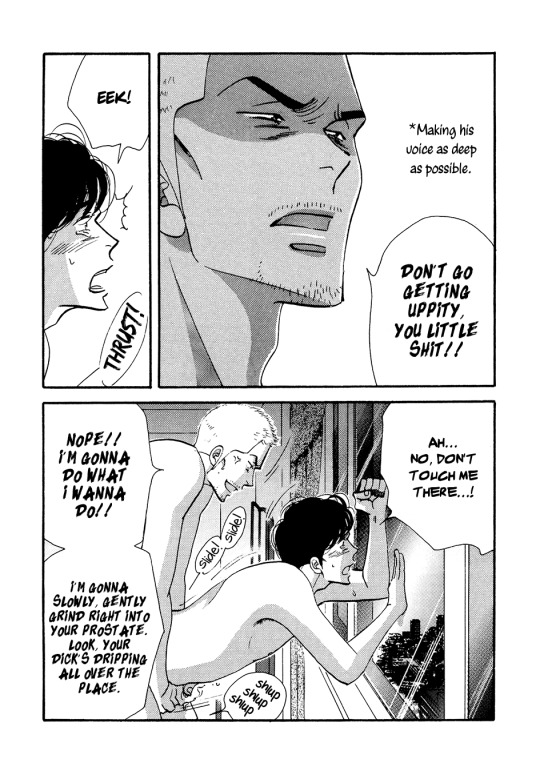


Here are some panels from the two latest volumes of the yaoi. I wonder if audience would have had the same impression of the show if they had incorporated the doujin bits too.
6. One piece of the puzzle that's missing here is Thai rape culture that blankets all of their society.
This is an important point @yousaygoodbyeandisay raised and it applies not just to Thailand.
Sexual assault as a theme in BL, handled in a myriad of ways, has been the case since the inception of the genre. I have discussed the history in the context of Japan here.
It was during the publication of JUNE magazine that the importance of depiction of sexual assault in BL became clear to the editor through response letters from readers.
June is a place of therapistic rehabilitation for those women who had experiences of mental and physical abuses as a female. Mr. Sagawa said that he cannot ignore that there are not a few readers who had such experiences during their childhood.
source
MAME studied BL and its production academically (you can find her research output by searching her name: อรวรรณ วิชญวรรณกุล) before she entered live action production. She not only know what she is writing/creating but also is willing to deal with difficult themes without taking sweet, fable-like route.
Now onto the points @mikuni14 raised.
7. my shock seeing so much SA related stuff (the show covered just about every problematic sex thing there is, and finally forgave the heinous criminal instead of putting him in jail. I don't know how MAME can create for example AePete and also somany vile things
For those who don’t know, MAME is a unique Thai BL creator. Thai BL creators on average lack BL literacies for various reasons. MAME is one of the exceptions. This is because:
she is a BL author & hence, one of the creators of BL literacies
she studied BL and its production academically [you can find her research output by searching her name: อรวรรณ วิชญวรรณกุล]
then she started producing live action BL
In an industry which is lacking in BL literacies, what she brings to the table is fu-culture (BL fan culture) in all its glory. Unfortunately, the live action audience who are fans of sweet BL, have a hard time adjusting.
Here are some typical narrative progressions for a (Japanese) BL:
あまあま – sweet
ユニーク – unique
シリアス – serious
邪道 – evil road (jadō)
王道 - royal road (odo)
Any theme/one-line plot can choose to take any of these narrative progressions. Moreover, Thai BL usually originates online which allows for innovation.
MAME employs different narrative progressions for different ships. AePete follows the typical sweet BL progression. KengklaTechno follows jado and TharnType odo.
TarTum is a sweet BL, complicated by them being step-brothers. While their pairing is barely on odo, Tum as a character has a complicated odo progression within their ship.
Since TharnType is an odo BL all wrong-doings are not punished. Take for example KinnPorsche, another odo BL, where the ending can’t be 'organized crime gets the main characters in jail'. In odo BL involving crime, most of the victims are usually cannon fodders. So, characters are not bothered much by the crime. But in MAME's universe, Tum is an important character, someone designed to make audience root for him. Hence the audience can’t dismiss the crimes against him. It is not wrong to want the narrative to have Lhong jailed. If TharnType was a sweet BL, it would have gone there.
8. selective memory
Selective memory is indicative of preferences and it helps to fine tune BL consumption. MAME's storytelling incorporates diverse elements. Those who enjoy her works also might find that there something or the other that isn't to their taste. This is an important part of BL literacies.
I enjoy dangerous characterizations over subdued ones and prefer a meriba more than a happy ending. While there are plenty of BL media with those, they are super rare in live action. So, I appreciate MAME for taking into account fans who want something different from sweet BL.
Here are the points @bengiyo raised:
9. What Did You Eat Yesterday v/s Old Fashion Cupcake
This has nothing to do with MAME but has to do with BL literacies more generally. Old Fashion Cupcake is more appealing to BL fans because it is a BL and hence not sanitized to continue run on a conservative magazine. So, it permeates moe (affect). Moreover, creators of Old Fashion Cupcake are better informed than creators of What Did You Eat Yesterday in terms of BL literacies. So, the direction and acting works better in the former than the latter.
9. The Effect feeling like the first huge volley leveled at BL from within the genre.
I am always amazed at the takes on the Effect. Somehow it is assumed to be a critique of BL genre. That's not the case. The Effect is a proper jado BL.
What audience are picking up on is the 'I can do it better' spirit that motivates a lot of BL creation. It is natural for audience to feel like the depiction of complex themes, such as sexual abuse, bullying, delinquency, identity theft, murder, infidelity, pregnancy, etc. are not dealt with well. Creating BL that fits one's taste better is one way authors and artists go about addressing the issue. That is how we end up with same theme dealt with in numerous ways. When that expands, we end up with sub-genres and BL categories.
Jado BL are rare, particularly in Thai BL.
It is difficult to sell BL with jado and other narrative progressions. It becomes even more difficult to sell branded pairings when the characters they play are not impeccable. It is unlikely that actors playing bad guys can sell products for advertisers. (Imagine the characters from The Effect being in ads together!) It is even more unlikely that fans would go broke behind wicked characters and would want to attend fan-meetings and concerts featuring them in some way.
This is also so as not to trouble the average audience’s worldview (世界観) and is clearly a low effort and low skill (in terms of BL literacies) approach. But since a lot of audience don’t appreciate villain-like characterization, it is clearly low risk, no chance of a backlash from angry audience and the best method for assured money making.
@respectthepetty has also flagged the next issue:
10. History3: Make Our Days Count.
Gays were being buried and put in prison in Taiwanese BLs in the same year it legalized marriage equality.
There is a lot of ethnocentrism in the hate that MODC gets, apart from lack of BL literacies. While I understand where that take is coming from given American media history in the context of Hayes code, AIDS crisis, etc., I wish media from elsewhere would be looked at independently.
Queer narratives everywhere have their own over-used tropes and historical issues. Malayalam media, for example, has the issue of having one of two queer characters having varathan vibe (Rosy in Ponnaranjanam, Kiran in Sancharram, Antony's boyfriend in Mumbai Police, Kiran in My Life Partner, etc.) that makes them look odd in Kerala's rurban landscape. Even Kaathaloram played into this trope. The problem is that it perpetuates the belief that queerness is an import of sorts.
Mindless application of media critique learned from the west leads to the brushing aside of pertinent issues with media of the region in favor of finding legitimacy via commonality with the west. That way we end up with crits accusing Moothon of employing bury the gay trope while ignoring that:
Moothon is a gangster action flick like Kammattippaadam
It is rare for romances irrespective of the gender of the main characters and genre of the movie to have happy ending in Malayalam. In fact, almost all great love stories in Malayalam movies are tragedies. This is unlike in Hollywood where heterosexual romances usually get happy endings.
more importantly, every queer character, including Latheef, is infused with varathan vibe.
Taiwanese BL has issues worth exploring. Issues of their own media - not varathan queer trope from Malayalam media or bury your gay trope from American media.
MODC was an dealing with well-established BL tropes (like any other show in the History franchise). It explored bereavement (a tribute to Lan Yu, first ever danmei live action adaptation) and substitute lover trope.
The series introduced a doppelgänger of Yu XiGu (Xiang HaoTing’s white moonlight), a perfect candidate for substitute lover trope. But instead of pursuing it, they subverted the trope.
History franchise, which was build to grow BL and BL literacy in Taiwan, ended up victim to prejudice since it failed to measure up to foreign standards. MODC offered something rare. The audience didn't appreciate it. They dismissed it for not measuring up to expectations colored by experiences which danmei is not connected with for historical reasons.
By that standard, would tongzhi literature from Taiwan too have to make amends for sins of the west towards its queers? Imagine stripping of death as a theme from tongzhi author Chiang-Sheng Kuo's works! Then there is also difference in how death is perceived in different societies.
Why must BL be arm-twisted to fit into norms from elsewhere and correct the wrongs of someone else?
11. BL profit off LGBT community
This is really interesting. There are many questions that I can think of that is linked to this take:
Is BL really profitable? Short answer is no. Long answer here.
Is it really LGBT community that BL profits off?
Probably not. It is moe that BL sells. That imo, is the main difference between BL and other queer genres.
Anyway, BL predates LGBT acronym. It predates de-pathologization of homosexuality in many BL creating regions. Fu-people were creating BL before mainstream media started representing queer people in media. Fu-people battled state and its censors everywhere along with queer people. Live action BL surely is commercialized. But that is capitalism reaping the dividends of decades of fu-people's labor of love.
@he-is-lightning-in-a-bottle raised the following point.
12. 2019 saw significant increase in quantity and quality of BL. Since then, live actions smoothed out the rougher edges of the source material (like what happened with Kinnporsche and Love in the Air).
While I understand the rational behind toning down dangerous characterization to appeal to the largest audience, I think that kind of censorship for commercialization limits potential of the genre. The impact is most visible in case of GMMTV BL such as Only Friend (where it could neither be sweet BL nor could it embark properly on jado).
Compare it with adaptation of the ero-BL Sei no Gekiyaku. It stayed true to the content and pushed the boundaries enough to bring about convergence between gay pinku cinema and BL. When BL is allowed to explore its potential freely, it not only imparts BL literacies but also makes it possible for other queer genres to gain new audience, which in turn encourages production houses to venture into different queer genres.
jjsanguine raised the following point.
13. I don't even hate toxic characters or plotlines, actually I love them. But like even if the characters don't know they're doing it, the show should. And it really really doesn't. And neither do the fans. Kind of alarming.
This is in relation to Lhong and San.
Lhong is a yandere in a odo BL. (for detailed discussion see Part 3) It is a matter of the world view and less about show's self-awareness (which I believe it has). If TharnType was an jado BL, Tharn could have ended up with Lhong and Type would be the stalking horse.
@jjsanguine later commented about how Lhong felt "goofy" by way of his over-the-top actions which made the show's convictions questionable.
San and Tharn's relationship was, to an extend, the most realistically depicted. I remember starting to learn about Thai queerness and realizing that a lot of elements in their relationship reads like ethnography. Consider for example Tharn being only fourteen at the time of sexual debut and San being older. This is not too different from the average age of sexual debut in Thailand. Despite it being a compoundable offense, average age of sexual debut is declining. Tharn's discovery of what he likes and dislikes and shedding cuteness (which San comments about) and adopting manliness (which Techno comments about) too is in line with what is observed among urban queer youth. Contrast this with Sky in Love in the Air whose sexual debut and exploitation are tied to his migration to urban landscape. Sky's backstory too read like ethnography and his vulnerability a reflection of the many others' in his society.
@absolutebl raised the following points:
14. Rape - as plot device - doesn't make good stories - lazy & bad writing: Feminist critique and modern narrative analysis.
Feminist and queer BL scholars from Akiko Mizoguchi to James Welker have discussed rape as a plot device in BL. Since experts have written plenty, I'll spare my effort discussing this misconception.
15. rape is an act of sexuality (or worse, sexy), it is NOT - it is an act of violence. But that is only the start to the way it’s chronically mishandled, especially in commercial fiction (of which romance makes the largest percentage).
Akiko Mizoguchi's two decade of work have addressed this in relation to Japanese BL which I feel holds true for BL more generally. Moreover, BL is not a romance sub-genre. BL is a genre in itself. A lot of BL is romance. There is enough overlap between those genres to give the impression that BL is a romance sub-genre. But there are plenty of other works too. Like One Room Angel and Social Reform Season. Similarly, BL is not a porn sub-genre. A lot of BL is porn. But come on!
16. [MAME] produces consistent highly-profitable narratives by-and-about queer folks but utterly disingenuous to the queer experience and that defines exploitation in the ET industry... Right, just adding that yes BL does not represent (in any way) the reality of being queer in any of these countries.
I have already discussed how MAME's works are intersectional reflections of queer experience. BL has been reflecting different queer experiences in Japan even before the term boys' love emerged. But narrow, ethnocentric ideas of queerness doesn't lend itself to honest understanding of other forms and representation. Consider characters being addressed as เมีย ‘wife’. It is a Thai queer practice. One can always dismiss that since it sounds heterosexist in the culture one comes from as absolutebl does in this post. That, imo, is 'disingenuous to the queer experience' of Thai people.
The question is what are westerners missing in their own countries' queer media that they feel they must just judge everything with no care for the cultures and people producing content for themselves? Seriously, what have the westernization done to some in the audience that they emerge so desperate for queer content that they watch BL yet remain blind to the cultures (fu-culture in particular) that produce them and splooge vitriolic ethnocentrism?
-
That concludes this discourse series. I want to sincerely thank everyone who contributed to and inspired this 🙏.
Other parts: Part 1 | Part 2 | Part 3
#mame#love sea the series#love by chance#tharntype#love in the air#wedding plan the series#love sea#bl thai#thai series#thai bl series#thai bl meta#thai bl#love in the air the series#bl tropes#bl trivia#bl literacies#asian lgbtq dramas#asian bl series#asian ql#bl meta#bl analysis#bl trope analysis#bl drama#thai ql#tropes#bara manga#gei comi#thai boys love#thai drama#asianlgbtqdramas
70 notes
·
View notes
Text
The 7th Guest VR
If you've been following me for any length of time, you know that The 7th Guest is one of my most favorite games ever. I have talked about pretty much every iteration of it on here, except for things like the mobile 'Infection' game and the T7G board game (which, sadly, I don't own). It is time for me to talk about it again. :D
This past year, a VR remake of The 7th Guest was created by Vertigo Games. It was teased both on its own Facebook page and on Trilobyte's pages as well. The game was released on October 19th, 2023. I would be lying if I said that I didn't want a VR headset just for that game. I got both a headset and the game for Christmas.
As always, spoilers below the cut. But the TL;DR version of this review is thus- This game is very good. 4/5 stars. From the moment I first started it up, it already had the gloriously spooky vibes of the original. For this review, I'm going to break it down into parts, wherein I'll be talking about both the good and bad of each.
The Gameplay
When I first heard that a VR remake of T7G was being made, I was excited. I had such fond memories of the original, and it was an absolute treat to revisit the Stauf Mansion. Experiencing it now is a whole new level of amazing. Not only are the graphics much sharper, of course, but you can see so much more of the house. Instead of a still frame backdrop like the original, you’re able to freely wander around the rooms and interact with objects. A few rooms were scrapped (the art gallery and laboratory were removed entirely, and the maze/catacombs were reworked into a storage room and basement), but I feel like it doesn’t take anything away from the game. If anything, the removal/revamping of certain areas streamlined things.
A new mechanic added to the remake is the lantern your character walks around with. With the lantern, you can spawn in items, see hidden messages on the walls, and get hints for some of the puzzles. It took some getting used to, but I thought it was fun. The original game was point-and-click, so it was cool to see something new added to it.
Slightly less successful, at least for me, were some of the spooky effects in the remake. The original game had the occasional cutscene that wasn’t necessarily plot relevant, but they were still fun. Hands coming out of a picture, floating table settings, a clown ghost appearing in the game room, the Woman in White beckoning you to follow her, etc. The remake's spooky effects come in two ways- One is blink-and-you'll-miss-it moments of shadowy figures appearing in rooms and hallways. Another is paintings that change when you shine your lantern on them.
The Story
Both the original 7th Guest and the VR remake tell the story of one fateful, bloody night at the mansion of the disgraced toymaker Henry Stauf. Six guests were purposely invited, and a seventh was very much in the wrong place at the wrong time. The original game had an opening blurb about the events leading up to the story of the game, but the VR remake takes it a step further. Not only does the story of Stauf’s childhood slowly unfold throughout the game, but each guest’s room has little lore bits sprinkled throughout that give deeper insight to the characters' histories. Pictures, newspaper clippings, etc. Frankly, I love this. Those pieces of backstory were what was missing from the original game.
The Characters
The six guests from the original game make their glorious return in the VR remake. In the weeks leading up to the game’s release, Vertigo Games put out various teaser images and video from the game. At first, I was skeptical (a few of the characters seemed not quite right for their parts), but I think most of the actors did a fantastic job. In particular, I adored both Temple and Elinor. The game's narrator wasn't my favorite, though. There was a certain oomph that was lacking.
The Music
The soundtrack for 7th Guest VR was composed by Jonathan van den Wijngaarden, and I think he did a fantastic job. His score has the same delightfully spooky, but still strangely beautiful quality to it, especially with several of the tracks including familiar tunes from the original. George ‘The Fat Man’ Sanger himself even contributed to the piece of music that plays when you enter the chapel. I honestly have no complaints about the music. It was my favorite thing in the original and it might be one of my favorite things about the remake.
The Puzzles
I was very curious as to what the puzzles would be like in the remake. I have to say, I’m impressed. They have been reworked entirely, with each puzzle now being distinctly themed to whatever room it’s in. Temple’s puzzles all have to do with stage magic tricks, Julia’s puzzles are about either drinking or her fear of getting old, the kitchen puzzles involve things like finding ingredients for soup, etc. The only one that hasn’t changed is the puzzle with the 8 queens in the game room. If I had to nitpick something, it would be that it’s not always easy to spot the puzzles. Unlike the original game, there is no pulsing brain icon to show you what’s a puzzle and what isn’t.
The Easter Eggs
The 7th Guest VR is full of delightful nods to the original 7th Guest. The achievements you can unlock are all named for bits of dialogue from the original game, the dining room has a few glorious nods to the original dining room scene, and there was one particularly delightful music-based Easter egg I stumbled upon purely by accident (pro-tip: Explore every wardrobe, cabinet, and closet).
The Ending
I have thoughts on the ending. The 'final game' was a very weird choice, IMO. For the entirety of the game, the puzzles either relied on strategy or had very clear steps to how to solve them. The finale, however, throws you into an RNG based game against Stauf, where you roll a die, move pieces across the board, and the first to collect three souls wins. Switching up the formula like that honestly pulled me out of the game for a sec. On top of that, there were no actual consequences to losing. If Stauf beat you, the final game just started over from the beginning. It would have been nice for there to be a bad ending, especially since the original game was supposed to have multiple endings as well.
I do love the final cutscene, though. In the original game, a combination of budget and technology constraints kept Trilobyte from fully carrying out the vision they had, so it wasn't entirely clear what happened to Stauf. The remake's ending, though, there was no mistaking how Stauf meets his end. The last bit of dialogue/narration in the game strongly hints at the possibility of a sequel, though, and I'm not sure how I feel about that. If anyone from Vertigo Games happens to read this: if you *are* planning a sequel, I would implore/encourage you not to draw too much inspiration from 11th Hour. That game was not good.
All in all, this game is fantastic. Not quite perfect, but almost. If you have a VR headset and you like puzzle games and spooky atmosphere, I highly recommend you get this one.
#The 7th Guest#The 7th Guest VR#professionally unprofessional#Video game review#VR games#Meta Quest 2
2 notes
·
View notes
Text






Rit 9: het verslag van deze rit had ik gisteren klaargemaakt maar is blijkbaar dus niet goed geplaatst geweest. We rijden dus van Londigny naar le tâtre, Een verloren gat in de Charante  . Wel opvallend was dat gisterenavond en ook deze avond de beide overnachtingen en de drie gangen menu’s Georganiseerd en geserveerd werden is door Engelse kolonisten. Dus was Pol goed in vorm om Expat verhalen bij hen op te diepen. Ook de Brexit kwam langs. De rit overdag verliep vrij vlot alhoewel het zeer warm was en er behoorlijk wat geklommen moest worden. Het landschap veranderde van graanteelt naar wijngaarden, voornamelijk cognac. En het was vooral eenzaam langs de weg. En verder geen ongelukken.
3 notes
·
View notes
Text
Zuid-Limburg staat bekend om zijn glooiende landschap, schilderachtige dorpjes en prachtige natuur. Maar al die heuvels kunnen een flinke uitdaging zijn voor fietsers. Een elektrische fiets huren in Zuid-Limburg biedt de perfecte oplossing: je geniet van de omgeving zonder uitgeput te raken. In dit artikel bespreken we waarom een e-bike de beste keuze is voor een fietstocht in deze regio. Moeiteloos fietsen door het Heuvelland De heuvels van Zuid-Limburg geven de regio een uniek karakter, maar maken het fietsen soms zwaar. Met een elektrische fiets heb je daar geen last van. Dankzij de trapondersteuning fiets je moeiteloos omhoog en geniet je zonder inspanning van het uitzicht. Dit maakt het perfect voor zowel recreatieve fietsers als ervaren wielrenners die een ontspannen rit willen maken Meer kilometers, meer ontdekken Met een e-bike leg je langere afstanden af zonder dat je conditie een beperkende factor is. Hierdoor kun je in één dag meerdere hoogtepunten bezoeken, zoals de Vaalserberg, de Mergellandroute of de wijngaarden rondom Wahlwiller. Je hoeft je geen zorgen te maken over vermoeidheid en kunt optimaal genieten van alles wat de regio te bieden heeft. Duurzaam en milieuvriendelijk Een elektrische fiets is niet alleen comfortabel, maar ook een duurzame manier om Zuid-Limburg te verkennen. In plaats van met de auto de regio rond te rijden, kies je voor een milieuvriendelijke optie die past bij de groene omgeving. Veel verhuurders, zoals Tweewiel-Centrum Hub Nix & Zn, bieden moderne e-bikes met een lange accuduur, zodat je zonder zorgen op pad kunt. Ideaal voor groepsuitjes om elektrische fiets te huren in Zuid-Limburg Of je nu met vrienden, familie of collega's op pad gaat, een elektrische fiets zorgt ervoor dat iedereen in het gezelschap dezelfde ervaring heeft. Niemand hoeft achter te blijven of zich zorgen te maken over het tempo. Bij sommige verhuurders is het zelfs mogelijk om groepsarrangementen te boeken, inclusief een route op maat. Waar een elektrische fiets huren in Zuid-Limburg Wil je zelf ervaren hoe comfortabel een e-bike is in deze heuvelachtige regio? Dan zijn er verschillende verhuurders beschikbaar. Tweewiel-Centrum Hub Nix & Zn is een uitstekende optie, met een breed aanbod aan kwalitatieve e-bikes en handige extra’s zoals levering op locatie. Meer informatie vind je op hun website. Met een elektrische fiets ontdek je Zuid-Limburg op een ontspannen en plezierige manier. Dus waar wacht je nog op? Huur een e-bike en ervaar zelf de voordelen! Read the full article
0 notes
Text
Drie Bronckhorster genomineerden voor titel ‘Vrijwilliger van het jaar’ bekend
De gemeente Bronckhorst zet vrijwilligers die zich onderscheiden door hun activiteiten in de gemeente jaarlijks in het zonnetje met de verkiezing ‘Vrijwilliger van het jaar’. Tot 10 januari kon iedereen personen of groepen aanmelden die deze titel dit jaar verdienen. De drie genomineerden zijn in willekeurige volgorde: Kees de Lind van Wijngaarden uit Hoog-KeppelKees is sinds 2018 coördinator…
0 notes
Text
I think there are some misconceptions here.
What Knock conveys is his intention to top, which is met with resistance Iron Korn. This is not the subversion OP thinks it is. They are playing into this very queer dynamic that many other BL employed later.
Narupon Duangwises and Peter A. Jackson in their 2021 paper Effeminacy and Masculinity in Thai Gay Culture: Language, Contextuality and the Enactment of Gender Plurality note insertive partner or fai ruk being called “husband” (phua) and receptive partner or fai rap being called a “wife” or mia in Thai gay culture.
In the book Male Homosexuality in 21st-Century Thailand based on longitudinal ethnographic study of Thai queer men, JWL van Wijngaarden highlights the difference between referring to one’s partner as ["husband"] or “wife” and simply as “boyfriend” (faen) and how much more the former is valued. [This is what Korn mean by leveling up.]
2. Also, there aren't any typical uke and seme characteristics. Theirs is an exemplary presentation of the masc4masc style seme uke aesthetics that was all the rage in Japanese BL during early 2000s (like Harenchi no Susume).
MaxTul in their series offer a delicious combination of the two (of three) popular types of masculinities in Thailand:
secular male - chaai chatri (ชายชาตรี): embodies typical masculine features such as ‘authority, courage, self-assurance, physical and emotional strength, and sexual prowess’ as well as someone who ‘would under normal circumstances control his sexuality as much as possible and be loyal to his family.’
lower-middle-class - nak leng (นักเลง): ‘a man who is brave, daring, risk-taking but also fair.’ In more recent decade: ‘a man who is tough, loyal to allies and a playboy with numerous sexual affairs.’
I whole-heartedly agree: they are trailblazers. Thank you, OP 🧡
MaxTul and their BL's were way ahead of time.
Starting with Korn and Knock calling each other 'husband' and 'husband' in Together with me instead of the now commonly used terms 'wife' and 'husband' in BLs.
Manner of death being the pioneer for a different genre in BLs in a time when only student themed BLs were in the spotlight.
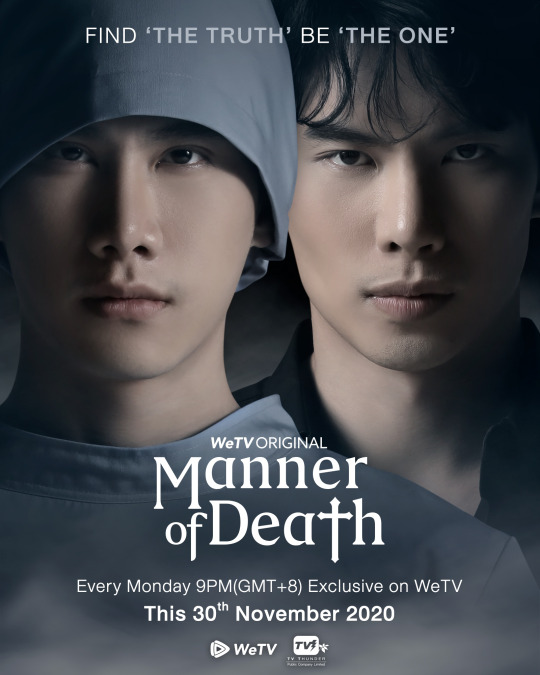
Tul using his platform as a BL actor to advocate for LGBTQIA+ rights which should be normal but guess what there are not a lot of BL actors speaking about these issues.
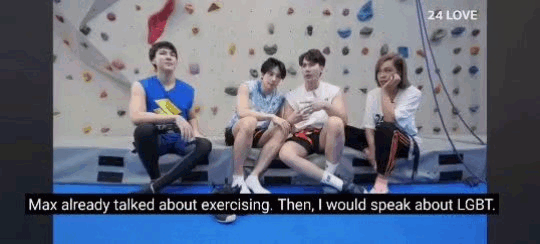
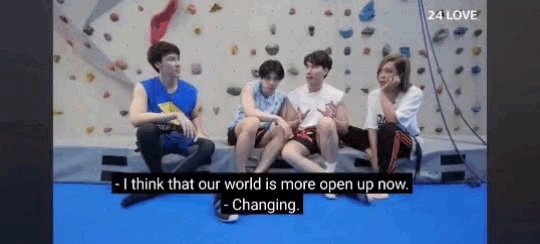
Not playing into the stereotype of the typical uke and seme characteristics (which I know exists in real life too but representation of the other side of the spectrum matters equally). Not everyone fits in the same box. Also their pride photos are 😍❤️ (This is also something that somehow I have not seen a lot of BL actors doing inspite of playing characters of a genre that talks about queer love stories.)
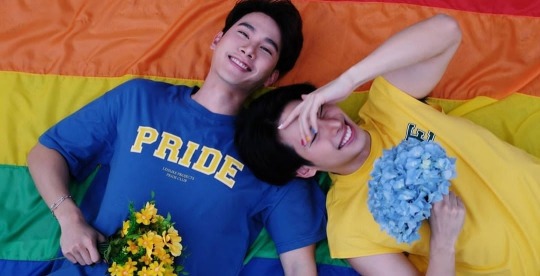

Tul supporting Max through his relationship reveal and standing by his side through everything and Max refusing to say that what he and Tul shared was fan service or fake. Even at the risk of losing fans these two remained honest to each other and their fans.
youtube




Honestly this whole interview was eye opening on many levels. This proves another one of my points that two BL actors may share a good equation and comfort level and it is not necessarily fan service. Being of the same gender and sharing the experience of acting together definitely helps in forming an organic relationship.
People just need to stop overanalyzing and over interpreting certain actions to make it seem like a relationship.
In conclusion according to me, Max and Tul paved the way.
406 notes
·
View notes
Text
Café Sport bij de Dordtsestraatweg en de Hordijk, 1962 (geschat). 🆕️
De Dordtsestraatweg loopt in de richting van de stad Dordrecht. De Dordtsestraatweg is de oude Charloisse Zeedijk, de noordoostelijke grens van de voormalige polder Charlois. Ze stond vroeger bekend onder de naam Oudeweg. De weg is onder keizer Napoleon bestraat. Vanwege deze betere bestrating heette hij ook wel Koninklijke Straatweg. In 1960 ontving het gedeelte van de Dordtsestraatweg, dat door de wijk Lombardijen loopt, de namen Spinozaweg en Pascalweg. De loop van dit gedeelte van de weg werd enigszins gewijzigd.
Oorspronkelijk heette de Hordijk vermoedelijk Hordendijk (dijk verstevigd met horden). Een horde is een plat vlechtwerk van rijshout voor het maken van bekistingen. Het beroep 'hordemaker' kwam vroeger in dit gebied voor.In 1446 werd een overeenkomst aangegaan tussen de ambachtsheren van Oost-IJsselmonde, Godschalk en Oem van Wijngaarden en Hugo van Lannoy, met de ambachtsvrouwe Margriete van Comene (van Rieder-Ambacht) en dijkgraaf, hoogheemraden en ingelanden, om gezamenlijk de Hordijk aan te leggen, 'welken Hordijk voorz. die ingelanden van IJsselmonde voorz. alleen op hen selven niet machtigh en waren te versekeren, soo sij veel Dijcks hebben en heur landt kleyn is als kennelijck is'.
De fotograaf is meneer Weltevreden en de foto heb ik gekregen via Binie Prooij-Weltevreden. De informatie komt uit het Stadsarchief Rotterdam.

0 notes
Text
Plans to cool the Earth by blocking sunlight are gaining momentum, but critical voices risk being excluded
Thanks ; Albert Van Wijngaarden, Adrian Hindes, Chloe Colomer Published ; Oct31 The 1991 eruption of Mount Pinatubo in the Philippines blocked so much sunlight the world temporarily cooled by a few tenths of a degree. Solar geoengineering works on a similar principle. Credit: Dave Harlow / USGS Solar geoengineering research is advancing fast, after a recent flurry of funding announcements. Yet…

View On WordPress
0 notes
Text
How Some Social Media Influencers Can Promote the Slow Fashion Trend

With an emphasis on sustainability, ethical production, and thoughtful consumption, the slow fashion movement has brought about a profound change in how people approach their wardrobe decisions. Influencers on social media, especially on sites like YouTube, TikTok, and Instagram, have grown to be essential in promoting this movement. These influencers promote sustainable fashion and moral consumption practices, which helps to change consumer behavior because of their wide following and reputation. They support the slow fashion movement in the following ways:
Raising Awareness on Fast Fashion's Impact A lot of influencers utilize their platforms to inform their followers about how fast fashion harms human rights and the environment. Influencers such as Venetia La Manna and Aja Barber, for instance, frequently provide in-depth information about the ways that fast fashion adds to waste, pollution, and labor exploitation. By giving their followers educational resources—often in the form of YouTube videos, Instagram stories, or posts—they simplify difficult subjects and make it easier for them to grasp why slow fashion is important. These influencers often provide statistics, such as how the fashion industry contributes to 10% of global carbon emissions, or how textile waste from fast fashion clogs landfills. Through this content, they motivate their audience to make more sustainable choices
Promoting Ethical and Sustainable Brands A key aspect of slow fashion is supporting brands that prioritize ethical labor practices and sustainable materials. Influencers often collaborate with such brands, reviewing products and offering discounts to their followers. Influencers like Kestrel Jenkins, host of the Conscious Chatter podcast, consistently highlight brands that are transparent about their production processes, materials, and labor practices. By showcasing these brands, influencers make it easier for consumers to find and choose sustainable alternatives.
Encouraging Thrifting and Upcycling Influencers that support slow fashion also exhort their followers to thrift and upcycle apparel. For instance, Jessica Harumi posts articles about assembling a capsule wardrobe out of used or thrifted clothing. Thrifting contributes to slow fashion by prolonging the life of current apparel and lowering the need for new items. In addition, a number of influencers provide do-it-yourself advice on upcycling used clothing into chic new items, which promotes creativity and cuts down on waste.
Challenging Consumer Culture Influencers are important in combating the excessive consumption that fast fashion promotes. Advocates of slow fashion advise their followers to purchase fewer, high-quality, classic pieces rather than going on seasonal shopping sprees or hauls. Along with emphasizing the value of mindful consumption, they advise followers to consider "Do I need this?" before making a purchase. This mentality change is essential to cutting down on wasteful fashion. In conclusion, the development of the slow fashion trend is greatly aided by social media influencers. They contribute to the creation of a more sustainable future for fashion by enlightening their fans, supporting ethical products, and encouraging conscientious consumption. Customers are empowered by their influence to make better decisions and match their values with their style.
REFERENCES LIST McCloy, J 2019, ‘Top 13 Sustainability Influencers on Instagram’, greencoast.org, viewed https://greencoast.org/sustainability-influencers-on-instagram/. Wijngaarden, M 2024, ‘How Do Influencers Influence Fast Fashion (& You)? | Sustainable Fashion Blog| Project Cece’, www.projectcece.com, viewed https://www.projectcece.com/blog/648/how-do-influencers-influence-fast-fashion/.
0 notes
